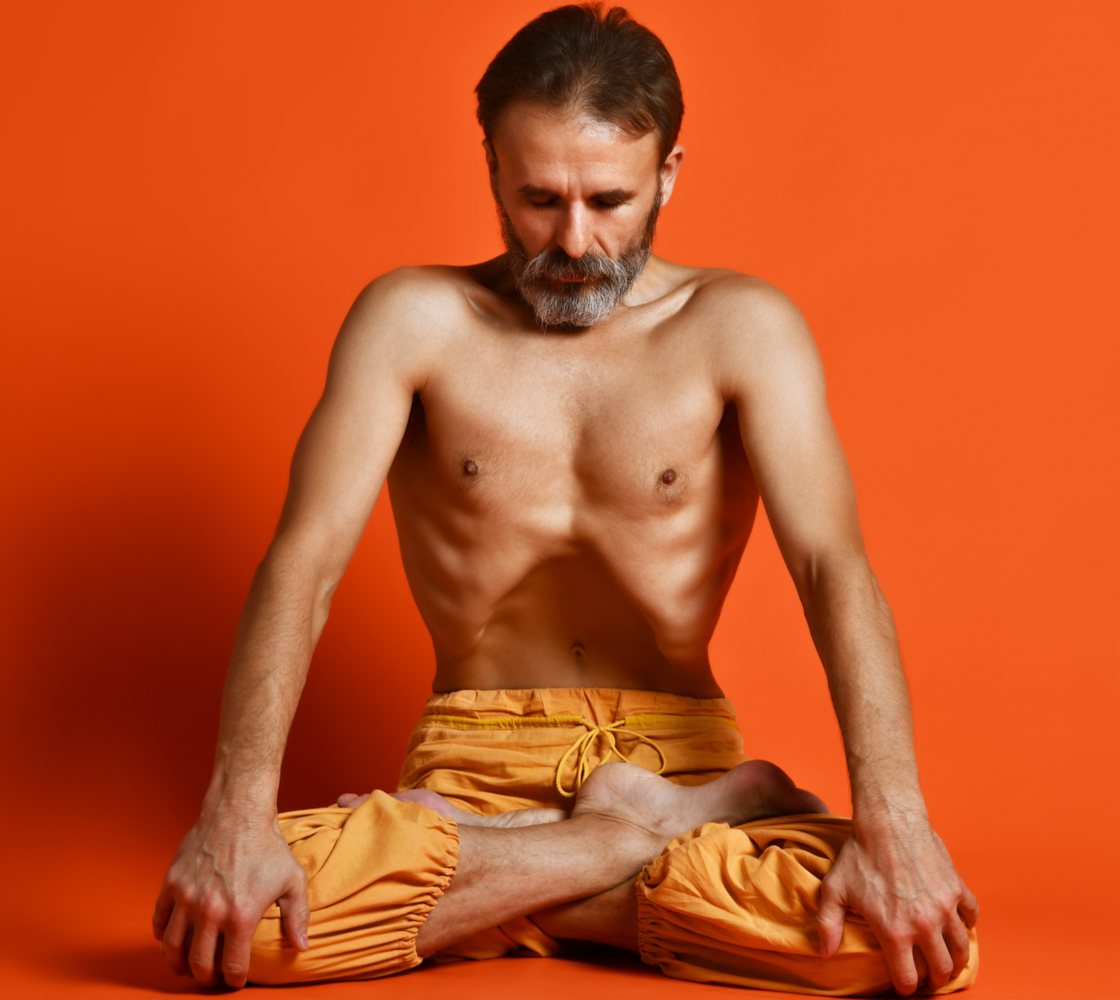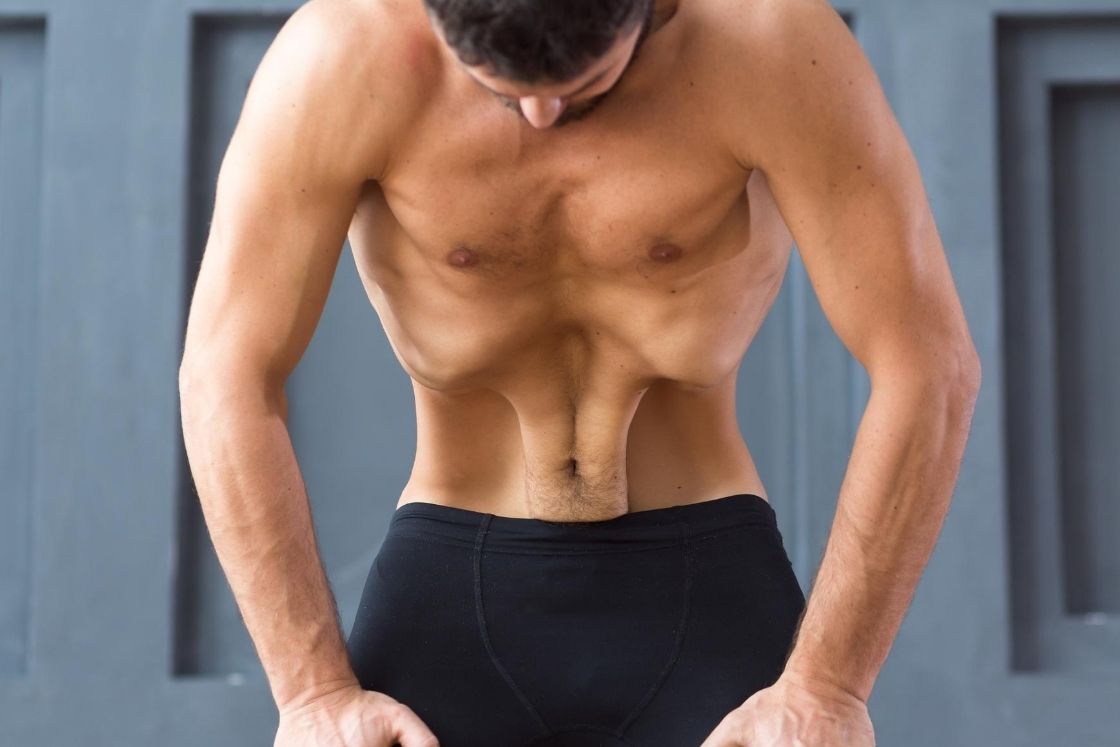
Bahya is a Sanskrit phrase meaning ‘outdoors’ or ‘exterior’ and pranayama (we already mentioned right here!) is all about respiratory workout routines of yoga.
In Bahya pranayama, you’re taking a deep forceful inhalation adopted by fully emptying your lungs. After exhalation, it’s essential to maintain your breath (out) for a couple of seconds and interact numerous bandhas (physique locks). This exhalation and outdoors retention are what make this pranayama distinctive.
Breathe retention in yoga known as ‘Kumbhaka‘. Due to this fact this pranayama is often known as ‘Bahir kumbhaka‘ or ‘Bahir Pranayam‘ (Bahir means outdoors).
Along with holding respiratory out, three Bandhas are integrated in Bahya Pranayama to extend the effectivity of the lungs and stimulate the respective organs system functioning.
By practising Bahya pranayama, it is possible for you to to stimulate your stomach organs and improve the digestion and elimination course of. It additionally improves your respiratory system and promotes mind-body steadiness. This pranayama can be identified to treatment imbalanced thyroid-related issues and cut back signs of diabetes as properly.
The way to Do Bahya Pranayama?
Practising Bahya pranayama will likely be extraordinarily helpful with an empty abdomen. In case you additionally observe Kapalbhati, observe this pranayama after it. Novices can begin by practising bahya pranayama for 5-7 minutes and regularly enhance the breath retention length.
- Sit in a cross-legged posture, most popular Sukhasana or Padmasana.
- Take a deep inhalation after which exhale, fully emptying your lungs.
- Maintain your breath out and convey your consideration to carry out 3 Bandhas;
- When you’ve got a stiff neck or some other subject, you do not need to drag down your chin. Maintain your head straight and look ahead.
- Maintain your breath for 3-5 seconds together with these 3 physique locks (collectively referred to as Maha Bandha).
- Launch these locks by inhaling deeply.
- Breath usually for a couple of seconds and repeat the method.

Superior practitioners can incorporate the observe of Agnisar kriya together with Bahya Pranayama. For this, on the finish of the 4th step, loosen up your stomach muscle mass and churn them across the central abs. It’s thought-about very efficient in stimulating the digestive fireplace.
Respiratory Ratio
The perfect ratio of inhaling Bahya pranayama is 1:2:3 i.e. if inhale is of 1 second, then exhalation needs to be for two seconds and eventually, the breath needs to be held out for 3 seconds. Equally, if inhale is doubled or tripled, then exhalation and breathe retention will likely be doubled or tripled additionally.
Bahya Pranayama Advantages
Bahya pranayama might appear to be solely targeted on breath retention nevertheless, it comes with numerous advantages. It not solely improves digestion but in addition helps in countering illnesses associated to the organs current on this space. Your respiratory system additionally will get cleansed and it additionally helps in curing diabetes.
Controlling your breath additionally improves your focus and additional enhances psychological readability.
Allow us to take a look at another advantages of bahya pranayama.
1. Stimulates and improves the digestive system
Bahya Pranayama consists of holding the breath out, squeezing the stomach to the navel stage, and lock it upward as a lot you’ll be able to. This motion on this Pranayama helps to enhance the digestive system. Because it will increase the flexibleness of the intestines, this may result in higher digestion.
Higher digestion additionally prevents abdomen issues similar to acidity, gastric reflux, constipation, and so forth.
2. Prevents points associated to stomach organs
The stomach incorporates numerous organs such because the abdomen, spleen, liver, kidney, uterus, and so forth. which carry out their very own distinctive perform. Bahya Pranayama promotes a recent provide of blood, which retains them stimulated. This stimulation additionally encourages them to work at their optimum stage. Thus, it’s going to stop points similar to hernia, urinary an infection, and so forth.
3. Cleanses and improves respiratory system
Respiratory strategies are related with the respiratory system. Therefore this respiratory method helps to enhance the respiratory system. Pranayama incorporates deep respiratory, that acts as cleaning brokers for the respiratory glands, and with each inhale and exhale it cleans the blockages.
Once we intend to empty the lungs in bahya pranayama by full exhalation, it really clears the lungs and saves loads of vitality from dissipating outdoors [efn_note] Impact of Brief-Time period Pranayama and Meditation on Cardiovascular Capabilities https://www.ncbi.nlm.nih.gov/pmc/articles/PMC3221193/ [/efn_note].
4. Reduces signs of diabetes
Working towards Bahya Pranayama will be helpful for diabetic sufferers. You’re contacting your stomach muscle mass in Bahya Pranayama which additionally stimulates the pancreas, the insulin-secreting organ. Correct insulin secretion will routinely cut back signs of diabetes. Breath retention may assist in decreasing blood sugar ranges [efn_note] Results of Bhramari Pranayama on well being – A scientific overview https://www.ncbi.nlm.nih.gov/pmc/articles/PMC5755957/ [/efn_note].
5. Aids in Kundalini Awakening
Bahya pranayama is useful in Kundalini awakening. On kundalini awakening, it provides rise to many non secular and bodily powers. Kundalini awakening provides sensations to the mind and that helps the mind to give attention to the present second. Your thoughts turns into calm and it prepares the thoughts for meditation.
6. Will increase focus and focus
Specializing in the present second will increase the extent of focus and likewise sharpens the reminiscence. The locking of bandhas calms the nervous system and promotes higher oxygen and blood circulation towards the mind. This helps in psychological readability, a targeted thoughts, and providing you with a peaceful demeanor.
7. Promotes mind-body steadiness
Once we maintain our breath and are available within the bandha place there isn’t any supply of oxygen within the physique for that point. Therefore all of the physique components which can be working individually from the mind at the moment are working collectively. In easy phrases, this Pranayama helps the mind and physique to work in a synchronized method.
Anatomical Results
Bahya Pranayama is only for the stomach muscle mass. One a part of this Pranayama is to squeeze the realm from the stomach upward after exhaling the breath. Therefore it creates a vacuum within the abdomen as there isn’t any extra air remaining inside. It makes blood contained in the physique fill the area that has been empty due to exhalation and retention of breath. So the blood is used to collect close to the intestinal space and on this method, it’s an efficient Pranayama for a lot of stomach ailments.
It really works on reproductive components as properly. Bahya Pranayama cures issues associated to urine and sperms. Additionally, after exhalation, holding breath out is the method of cleansing.
Bahya Pranayama and Kumbhaka
Kumbhaka (means breath retention) is a time period used within the Hatha Yoga observe of Pranayama. There are 8 classical pranayamas talked about within the conventional hatha yoga textual content.
Bahya Pranayama is the a part of considered one of three Kumbhakas;
- Antara Kumbhaka
- Bahya Kumbhaka
- Kevala Kumbhaka
Anatara Kumbhaka means retention of breath inside. On this respiratory, we take an extended and deep breath in whereas increasing the chest, after which maintain this breath inside by locking on the throat (Jalandhar bandha).
An instance of this respiratory is Murcha Pranayama.
Bahya Kumbhaka is the alternative of the above. It’s much like Bahya Pranayama within the course of i.e. exhaling fully out, holding the breath, then making use of 3 bandhas additional to create a way of vacancy within the physique.
Kevala Kumbhaka is delicate respiratory observe utilized in meditation. In easy phrases, it’s the transitional stage between inhalation and exhalation i.e. once we neither breathe in nor out. To take care of this stage of respiratory firstly one must grasp the above two.
Kevala kumbhaka may be very efficient in stilling the thoughts’s chatter earlier than meditation and so it’s referred to as pure pranayama.
Often Requested Questions
In case you are a affected person of hypertension or are affected by coronary heart illness and cervical colitis, you need to chorus from performing bahya pranayama. Furthermore, practitioners who’ve a historical past of bronchial asthma and migraine must also keep away from this.
Girls throughout being pregnant and menstrual cycle must also chorus from doing this pranayama because it creates strain across the uterus and stomach area.
Bahya Pranayam needs to be practised on an empty abdomen. When you’ve got eaten a meal, be sure to preserve a 3-hour hole earlier than you observe this pranayama. Additionally, empty your bowels if you’re practising the bahya pranayama early within the morning.
Though there are not any identified uncomfortable side effects of bahya pranayama, nevertheless, it’s higher to organize your lungs earlier than performing this pranayama. You possibly can observe speedy exterior respiratory like Kapalbhati Pranayama or Bhastrika Pranayama to organize your lungs.
There are 3 bandhas which can be engaged throughout bahya pranayama, that are :
Muladhara Bandha or Root Lock – positioned within the pelvic ground muscle mass
Uddiyana Bandha – positioned from the abdominals as much as the diaphragm
Jalandhara Bandha – positioned within the throat.


